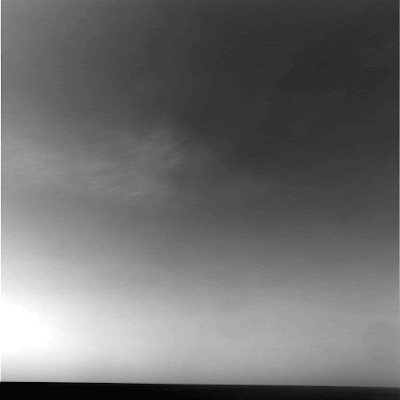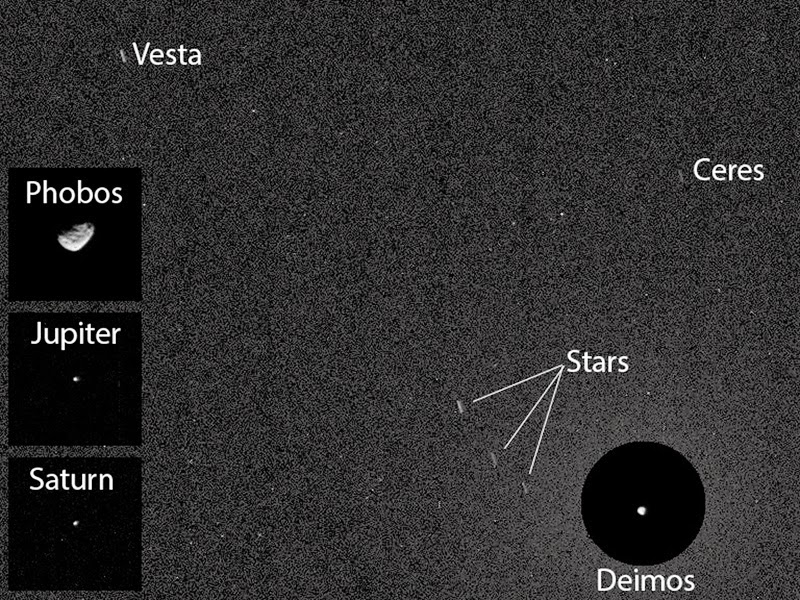NASA's MErcury Surface, Space ENvironment, GEochemistry, and Ranging (MESSENGER) spacecraft has provided the first optical images of ice and other frozen volatile materials within permanently shadowed craters near Mercury's north pole.
The images not only reveal the morphology of the frozen volatiles, but they also provide insight into when the ices were trapped and how they've evolved, according to an
article published in the journal, Geology.
Two decades ago, Earth-based radar images of Mercury revealed the polar deposits, postulated to consist of water ice.
Prokofiev, named in August 2012 for the Russian composer, is the largest crater in Mercury’s north polar region to host radar-bright material.
Credit: NASA /Johns Hopkins University Applied Physics Lab /Carnegie Iinstitution of Washington
That hypothesis was later confirmed by
MESSENGER through a
combination of neutron spectrometry, thermal modeling, and infrared reflectometry.
"But along with confirming the earlier idea, there is a lot new to be learned by seeing the deposits," said lead author Nancy Chabot, the Instrument Scientist for
MESSENGER's
Mercury Dual Imaging System (MDIS) and a planetary scientist at the
Johns Hopkins University Applied Physics Laboratory in Laurel, Maryland.
Beginning with MESSENGER's first extended mission in 2012, scientists launched an imaging campaign with the broadband clear filter of MDIS's wide-angle camera (WAC).
Although the polar deposits are in permanent shadow, through many refinements in the imaging, the WAC was able to obtain images of the surfaces of the deposits by leveraging very low levels of light scattered from illuminated crater walls. "It worked in spectacular fashion," said Chabot.
The team zeroed in on Prokofiev, the largest crater in Mercury's north polar region found to host radar-bright material.
"Those images show extensive regions with distinctive reflectance properties," Chabot said.
"A location interpreted as hosting widespread surface water ice exhibits a cratered texture indicating that the ice was emplaced more recently than any of the underlying craters."
In other areas, water ice is present, she said, "but it is covered by a thin layer of dark material inferred to consist of frozen organic-rich compounds." In the images of those areas, the dark deposits display sharp boundaries.
"This result was a little surprising, because sharp boundaries indicate that the volatile deposits at Mercury's poles are geologically young, relative to the time scale for lateral mixing by impacts," said Chabot.
"One of the big questions we've been grappling with is 'When did Mercury's water ice deposits show up?' Are they billions of years old, or were they emplaced only recently?" Chabot said.
"Understanding the age of these deposits has implications for understanding the delivery of water to all the terrestrial planets, including Earth."
Overall, the images indicate that Mercury's polar deposits either were delivered to the planet recently or are regularly restored at the surface through an ongoing process.
The images also reveal a noteworthy distinction between the Moon and Mercury, one that may shed additional light on the age of the frozen deposits.
"The polar regions of Mercury show extensive areas that host water ice, but the Moon's polar regions, which also have areas of permanent shadows and are actually colder, look different," Chabot said.
"One explanation for differences between the Moon and Mercury could be that the volatile polar deposits on Mercury were recently emplaced," according to
the paper.
"If Mercury's currently substantial polar volatile inventory is the product of the most recent portion of a longer process, then a considerable mass of volatiles may have been delivered to the inner Solar System throughout its history."
"That's a key question," Chabot said. "Because if you can understand why one body looks one way and another looks different, you gain insight into the process that's behind it, which in turn is tied to the age and distribution of water ice in the Solar System. This will be a very interesting line of inquiry going forward."






















































